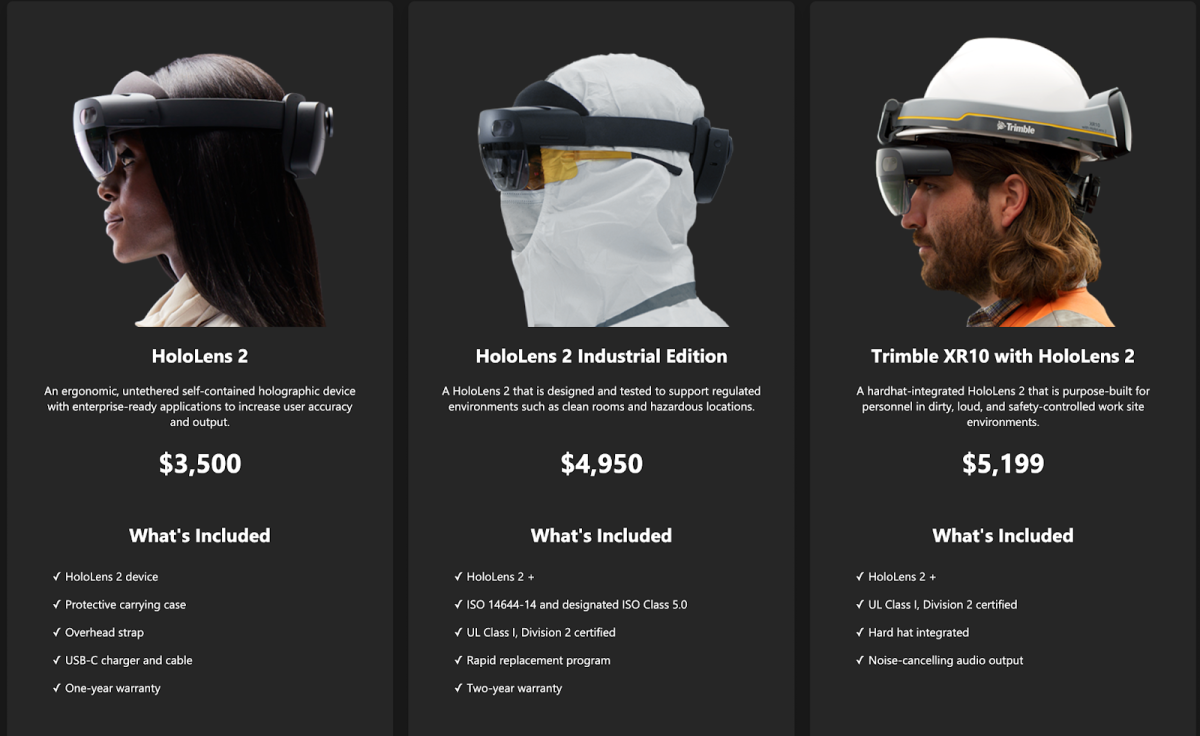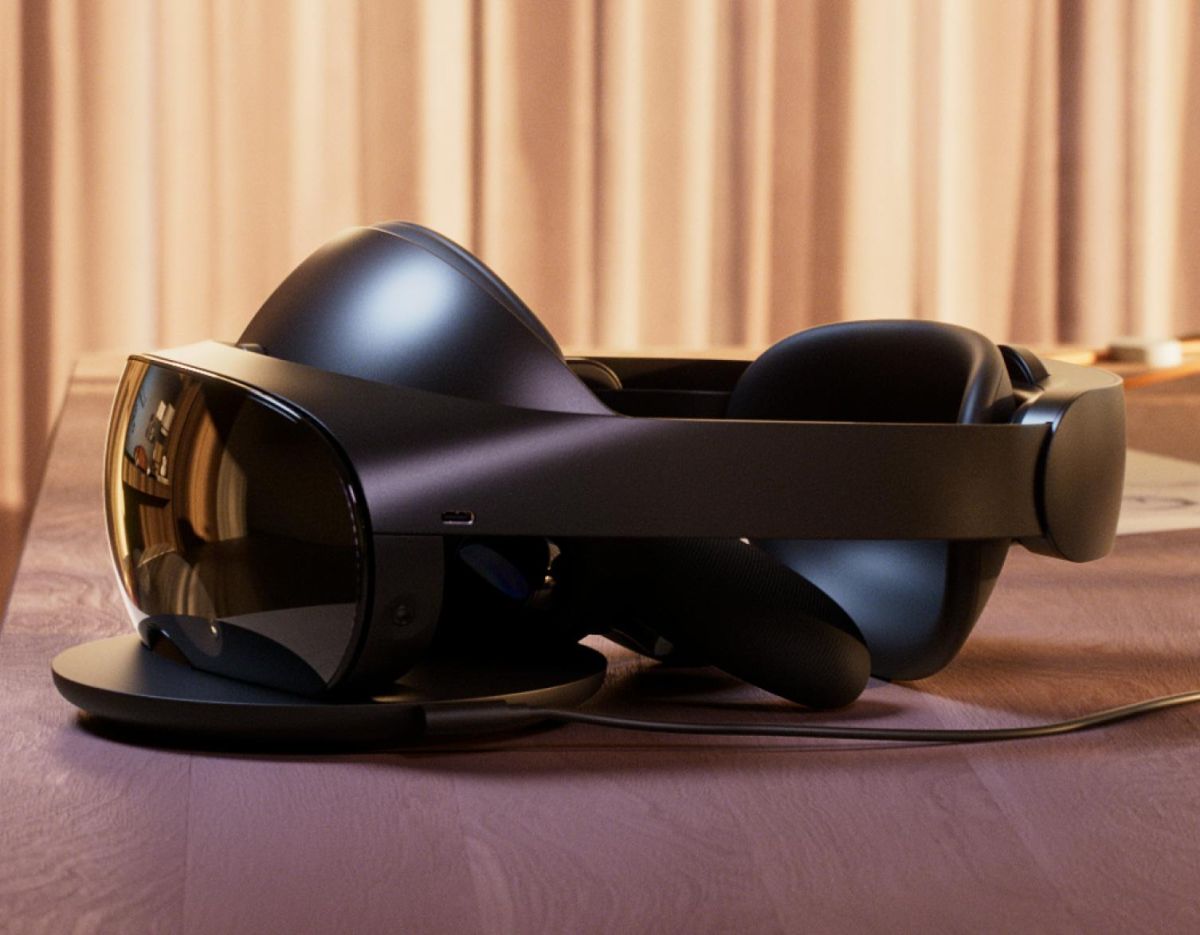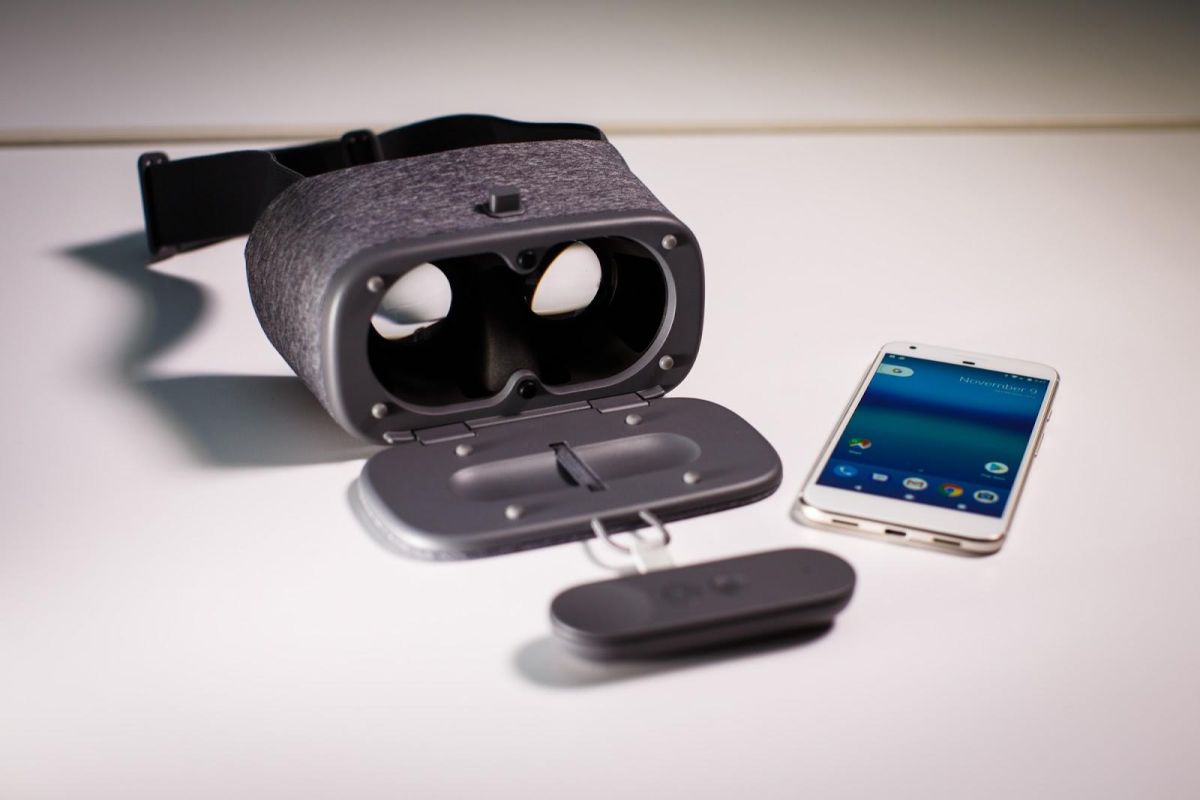Apple, Google, Meta, Microsoft: A battle for Metaverse headsets

The concept of the Metaverse is always evolving. However, one thing is constant: Immersion requires a high-tech VR headset. Internet giants are already fighting for their piece of the pie.
The competition for market share in the Metaverse started with the introduction of the AR2 chip (the sensor data processor used in headsets). Dozens of companies are trying to create the best VR/AR glasses, but some have pulled ahead. Some corporations have an unconditional advantage as they hold monopoly positions in the Internet services market.
Microsoft HoloLens
HoloLens smart glasses have been in mass production for about six years now. In fact, this is a head-mounted computer sans cables. In addition to the central and graphics processors, there is a holographic chip inside that can process gigabytes of information from sensors installed in the front.
It also has an accelerometer, a gyroscope, a built-in microphone, and a light sensor. These are the base components of glasses.
HoloLens 2 is designed to be even more powerful for the Metaverse. It has built-in AI that enables direct manipulation of holograms with the same interactions you would use with physical objects in the real world. In addition, the glasses use eye-tracking sensors.
HoloLens 2 supports Microsoft's mixed reality apps and Azure's multi-user, cross-platform interface.
● Resolution: 1440×936 per-eye
● Refresh rate: 90 Hz
● Weight: 547 g
● Visible FoV: 65° vertical
● Visible FoV: 43° horizontal
● Retail Price: $3,500
Its obvious disadvantages are the low field of view and poor price/quality ratio. The user still needs to turn his head to view anything around, despite paying $3,500 for the device.

HoloLens 2 virtual reality glasses. Source: microsoft.com
Apple
Apple began working on an AR strategy about five years ago, and today there are more than 14,000 augmented and mixed reality apps on the App Store.
Instead of developing a new OS, Apple intends to adapt iOS to the hardware in order to immerse users in the Metaverse.
Apple has a research team with hundreds of staff focusing on AR and VR and exploring ways to employ new technologies into future Apple products. However, their work is kept under wraps.
Small insider leaks pointed to Apple working on at least two Metaverse projects focused on an AR headset. It is expected to be released by the summer of 2023. They have already developed the operating system xrOS specifically for the headset.
It is expected to be a standalone device with powerful A-series processors and iMac M1-level performance. In terms of design, the headset will look similar to the Oculus Quest, but it will feature a sleeker design and lighter weight (not more than 420g).
We won't make any guesses on the technical specifications and the expected cost, since no official information has been revealed yet.
Another crucial aspect is that Apple's policy is aimed at vendor lock-in and preventing competitors from using its software or components. Hence, it is almost certain that the developed headset will not be able to function independently without an iPhone or Mac.
Meta Quest Pro
All of Mark Zuckerberg's resources are going into the Metaverse. Actually, the public's interest in the Metaverse as a whole was inspired by his decision to rebrand Facebook and give it a new direction.
Little is known about the Meta operating system because the company is trying to create a platform on its closed network and keeps its triumphs and failures a secret. But it shouldn't come as a surprise if Mark is the first to present a fully functional Metaverse OS, considering the resources and talent he has accumulated over the years.
However, as for the Metaverse headsets, Meta is performing well. The company introduced “depth masks” to the market a long time ago. The most advanced of them is Meta Quest Pro, which debuted in October 2022 as a better version of Quest 2.
Meta Quest Pro is a standalone VR headset with mixed reality features and face tracking with outward-facing cameras. Meta introduces the Quest Pro as virtual office glasses that allow people to meet up with colleagues and switch between full virtual reality and a limited version of augmented reality.
● Resolution: 1800×1920 per-eye
● Refresh rate: 90 Hz
● Weight: 722 g
● Visible FoV: 96° vertical
● Visible FoV: 106° horizontal
● Retail Price: $1,500
Even though the Quest Pro is far less expensive than the HoloLens 2, some customers believe it would be wiser to spend the extra cash on a Microsoft product. Many people complain about headaches from a heavy headset, poor color reproduction, and a grainy display. Additionally, those who have already purchased Quest Pro are outraged that its controllers work only 3-4 hours without recharging.
This device is seen to be inappropriate for virtual games because it is designed for a remote office.
We can only hope for Quest 3, which is expected to be released in the summer of 2023.

Meta Quest Pro Source: meta.com
Google Daydream View
For the Metaverse, Google aims to develop an operating system that will be connected to its servers. While the tech giant is working on its own AR/VR processor, given the power of the AR2 chip, it's not surprising if Google is using a Qualcomm processor, with which it has a long-standing friendship.
The goal of Google developers is to create an operating system that will interact with Metaverse gadgets in the same way that Android interacts with smartphones.
The headset, developed by the Internet giant, is only designed to work with a smartphone. According to customer reviews, Google Daydream View is a lightweight and cheap device that works well for simple phone games but falls short of providing high-quality immersion in virtuality.

Google Daydream View. Photo by Josh Miller
Some sources claim that Google instead of developing its own powerful VR device favors working with Qualcomm, which produces a full-fledged helmet for the Metaverse.
The Qualcomm Snapdragon 835 VR HMD offers very exceptional performance for the same price. We will go into more depth about it if Google officially announces that the gadget will support its OS for the Metaverse.
Conclusion
Reviewing the data reveals that Meta and Apple are attempting to create their vision of the Metaverse with their own hardware and platforms, while Google and Microsoft are taking a strategy based on open standards of the global network.
However, it's reasonable to say that Meta devs are currently in the lead. They proved to be more foresighted than others, developing VR and AR devices in advance and accumulating resources to make it happen.


